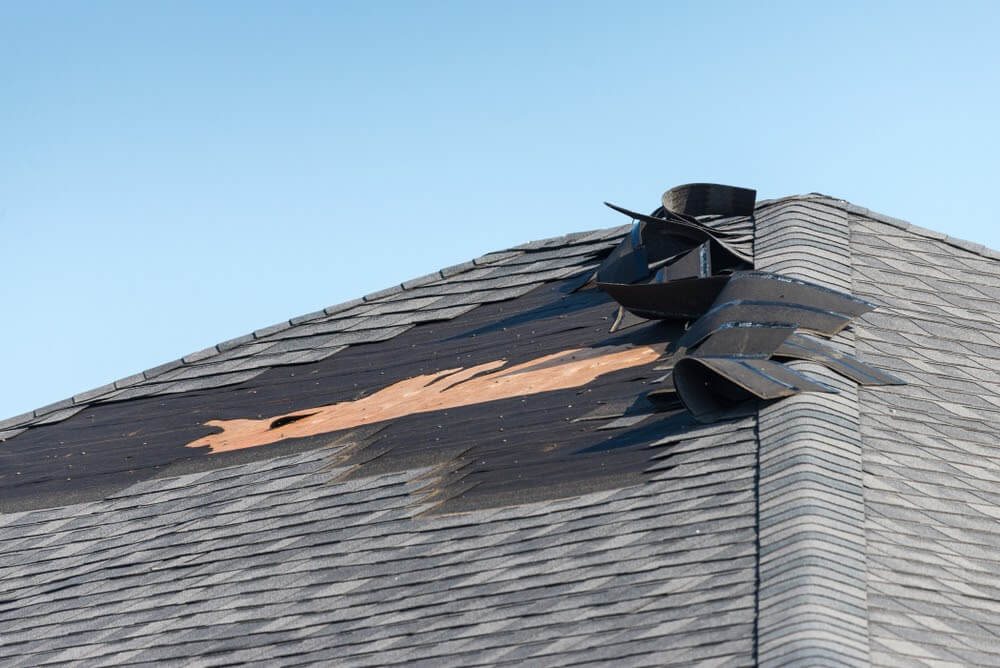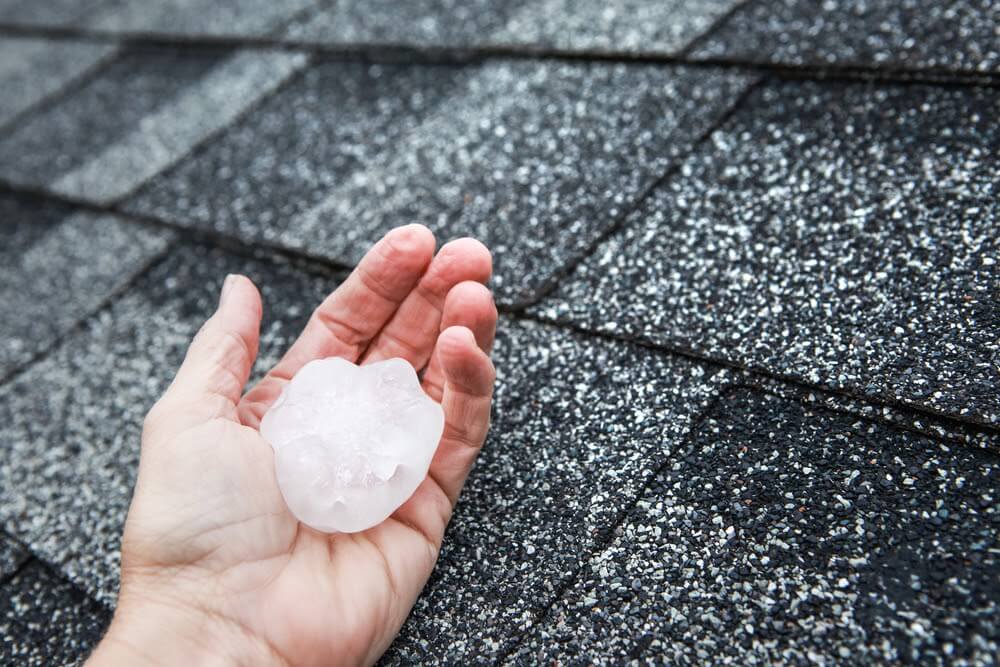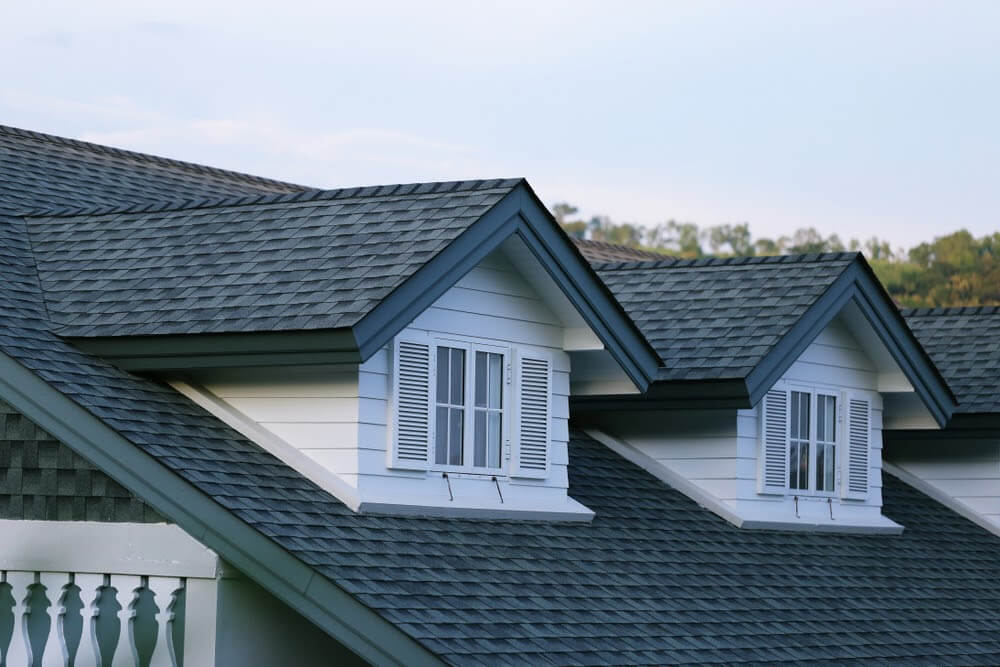Request Quote
Home | Our Blog | Homeowners Insurance for Roof Damage
Reviewed by Tomas Kalkys. President.
Qualifications: More than 20 years of experience in residential and commercial exterior remodeling.
Founding farther of Legacy Service.
Written by LegacyUSA Team
posted on Sep 20, 2021
Get Estimates From Roofing Pros

No matter what time of the year it is, it’s always possible for harsh weather to cause damage to your roof, especially if it’s an old roof. In the summer and fall, you may be dealing with hurricanes and hail. In the winter, your home will probably be contending with ice and snow. And in the spring, you might be facing hail storms and strong winds.
This is why it’s essential to have homeowners insurance. Fixing a roof isn’t cheap, and if your roof has been damaged by a natural disaster, from hail to fire to water, then your policy may be able to help you pay for it or even cover a full roof replacement.
Not a real zip code.
At Legacy Service, we install and replace roofs for homeowners throughout southeastern Pennsylvania, New Jersey, and Delaware. We also offer a variety of other services that are designed to improve the exterior of your home. Whether you need to install a roof, replace your siding, or replace your windows and doors, you can contact our team to schedule a free consultation! Reach us at 215-798-9790 or https://legacyusa.com/contact/.
In this blog, we’ll discuss what kinds of damage homeowners insurance covers, how to make a hail damage roof insurance claim, and some of the questions that we’re most frequently asked about this insurance.
The good news is that most homeowners insurance policies cover roof wind damage. It’s actually one of the most common causes of damage from storms, and homeowners insurance will usually provide some coverage for repair or replacement when a roof is damaged by a bad storm. However, it’s always best to check your policy to understand what it covers.
In most cases, most roof damage from wind in a storm is considered wind damage and will be covered under a homeowners insurance policy. Harsh winds can cause destruction to roofs and even siding or windows.
A variety of storms that can cause wind damage will typically fall under a homeowners insurance policy coverage. They include:
Make sure you review and understand what your policy covers, including deductibles, exclusions, and coverage limits.

Your homeowners insurance may cover your roof’s damage, depending on what caused it. Although the only way you can tell for sure is if you check with your policy, you can still get a general idea of what yours would cover.
In the next sections, we’ll review the different types of roof damage and whether they can be covered by most types of homeowners insurance. If you’re dealing with loose or broken shingles, blow-offs, leaks, punctures or cracks, worn-down materials, ponding water, structural damage, or another type altogether, continue reading to learn more.
Loose and broken shingles can be covered under homeowners insurance policies if they’ve been caused by some sort of natural disaster. However, it’s important to remember that roof damage insurance claims will not work for loose and broken shingles if they’ve been caused by traditional wear and tear.
As your roof nears its life expectancy, you can expect problems, such as broken or loose shingles, to arise. Insurance companies will expect you to maintain your roof and replace it as needed, so this type of damage is not often covered. Contact your provider to learn more about your policy’s coverage.
In many cases, roof blow-offs are caused by brutal storms and harsh winds. Several types of storms that cause wind damage to your roof may fall under the coverage of a homeowners insurance policy, including nor’easters, tornados, hailstorms, derechos, thunderstorms, hurricanes, and microbursts.
Whether you’re dealing with tornado damage or damage from a hurricane, there’s a good chance your roof replacement will be partially or fully covered by your homeowners insurance. Remember to keep in mind, though, that the only way you’ll know if your insurance covers wind damage is to check with your insurance company about your policy.
Is your roof leaking? It’s a good idea to find out if your roof leak damage is covered by insurance. In most cases, it will depend on what has caused the leak and whether it has resulted from a covered peril. Under many homeowners insurance policies, roof leaks that have been caused by wind, hail, or fire damage may be covered in some way, which will help pay for the repair (unless your policy has a hail or wind exclusion). However, if the damage is a result of wear and tear or a lack of maintenance, homeowners insurance will generally not cover it. Contact your provider to find out more about whether they’ll cover leaky roofs.
Sometimes, floods can cause moisture damage to your home, whether it’s to your roofing, siding, or another part of your property. Unfortunately, most types of homeowners insurance will not be able to cover flood-related damages. Homeowners will need to get flood insurance for this type of protection.
The best way to figure out whether your homeowners insurance policy will cover your roof’s damage, though, is to get in touch with your provider. Roofing insurance for storm damage tends to cover hailstorms, thunderstorms, hurricanes, tornadoes, and more. We’ve included a full list of storms in the aforementioned section, “What is Considered Wind Damage Under a Homeowners’ Policy?”
Punctures and cracks in your roof may occur from storms, especially hailstorms. Will your homeowners insurance cover the repair or replacement costs for punctures and cracks? Like other types of damage, it depends on what caused it. Punctures and cracks that occur from traditional wear and tear or lack of maintenance will typically not be covered by homeowners insurance, while ones that are the result of harsh wind or hail will likely be covered to some degree. Contact your insurance provider to find out more about coverage for roof damage from hail.
Since most homeowners insurance policies only cover roof replacements if the damage is a result of a sudden accidental event or an act of nature, worn-down roofing materials will not be covered. Most policies won’t pay to repair or replace a roof that’s deteriorated due to traditional wear and tear or neglect. It’s also important to remember that roofs that are 20-years-old or older will often have limited coverage. However, if you’re wondering whether you can file insurance claims for roof damage, get in touch with your provider today.
There are a handful of water damage scenarios that will be covered by a typical homeowners insurance policy, including storm-related. As for ponding water, it depends on how your roof got damaged. If you’re dealing with ponding water due to a lack of maintenance or the traditional wear and tear of an aging roof, then your homeowners insurance will most likely not cover the cost for repair or replacement. However, if particular storms have caused the ponding water, then your insurance may cover it. Ask your insurance provider for more information.
Will most homeowners insurance policies cover structural damage? As we’ve mentioned in the sections above, it depends on how the structure of your roof became damaged. If it’s caused by storm damage to the roof or a tree falling on your house, then there’s a good chance your homeowners insurance will cover the cost of repair or replacement, whether it’s full or partial coverage. If you have questions about your homeowners insurance policy, get in touch with your provider. If you have questions about your financing options provided by Legacy Service, you can find more information here: https://legacyusa.com/financing/
There is a wide variety of other types of roofing damage that homeowners may have to deal with, including blistering shingles, cupping, granule loss or flaking, curling shingles, a roof falling in, and more. When it comes to whether homeowners insurance will cover it or not, the important thing to remember is that it depends more on how your house sustained the damage rather than what type it is. For example, in most cases, homeowners insurance will fully or partially cover a roof with hail damage.

Whether home insurance will cover a roof leak or not will depend on what caused the leak. Most policies will cover the roof repairs or a replacement if a named peril has caused the roof to crack and leak. A couple examples of named perils include: a tree branch crashing into your roof and causing a leak and shingles being ripped off of your house during a windstorm.
Not a real zip code.
Roof leaks will not be covered by home insurance if they’ve been caused by traditional wear and tear or a lack of maintenance. Many roof insurance companies will also deny a claim if it’s caused by birds, pests, mold, wet rot, improper code materials, or construction errors. In simplest terms, homeowners insurance will cover damage that is sudden and accidental but not gradual damage.
It’s unfortunate if a hailstorm passes through your area and causes hail damage to your roof. The good news is that most standard home insurance policies will be able to cover roof damage from hail. In this section, we’ll discuss a step-by-step guide about how to make a hail damage roof repair insurance claim. Let’s take a look at the process:

If your roof has been damaged by a storm or a sudden accident, then it’ll either need to be repaired or replaced. First, check to see if your policy will cover the damage by reviewing your policy. If it will, document the damage and contact your insurance provider to submit a claim. Then, research roofing companies that will be able to repair your roof. If your claim is approved, you’ll be able to work with your chosen contractor to make sure your roof is as good as new.
At Legacy Service, we provide roof installation and replacement services for homeowners throughout southeastern Pennsylvania, New Jersey, and Delaware. If you’d like to replace your roof, please feel free to contact us at any time.
Homeowners insurance isn’t the only way to help protect your investment. It’s also important to take proactive measures to help secure your house from roof storm damage and more.

Are you wondering about the average insurance payout for roof hail damage? Or would you prefer to know about wind damage roof insurance? Here are some of the questions that our team is most frequently asked about homeowners insurance for roof damage. If you’d like to schedule a consultation for installation or replacement, give us a call today.
The insurance payout for hail damage will be different for every homeowner depending on the insurance policy, the extent of the damage, and the size and shape of the roof. With that being said, the average homeowner claim was about $12,000 in 2020, according to State Farm data from the same year. Yours may be lower or higher depending on the variety of factors we previously mentioned.
If your roof has been damaged during a hailstorm and you have hail damage roof repair insurance, then it’s time to get in touch with your insurance provider to make a claim. After that, you’ll want to hire a roofing contractor to repair or replace your roof.
Whether homeowners insurance will cover water damage from a leaking roof or not depends on what caused the roof to leak. If a covered peril has caused the leak (including but not limited to hailstorms, harsh winds, thunderstorms), then most homeowners insurance policies will fully or partially cover the damage.
On the other hand, if the leak is a result of traditional wear and tear or a lack of maintenance, then your homeowners insurance will most likely not cover any water damage. However, it’s always best to review your insurance policy and contact your provider with any questions.
If your roof has received damage due to hail, then you’ll want to file an insurance claim right away. It’s also important to remember to take pictures of the damage and not to make any repairs before contacting your insurance provider. However, you’ll want to protect it by covering it with a tarp or a different type of covering.
Most standard insurance policies include hail damage as part of their protection coverage. The homeowner will file a claim, pay the deductible, and then the insurer will pay to fix the damage. Before filing a claim, it’s best to make sure your insurance payout will exceed the deductible’s amount by enough money for it to make sense financially.
Many home insurance policies will allow homeowners to claim roof repair if sudden, unpreventable damage has occurred to their roof. For example, if you’re dealing with a roof leak or missing shingles due to an act of nature (like a hailstorm or hurricane), most policies will fully or partially cover the repairs or replacement needed for your roof.
Once the damage occurs, make sure you take photos of it and review your insurance policy. If you have any questions, you can also contact your provider to assist you during the process. After contacting your insurance provider, find a roofing contractor to complete the repair or replacement. At Legacy Service, we offer roofing installation and replacement services.
How the insurance company pays for your roof’s damage will depend on your policy’s terms. Various options may include coverage for partial damage, replacing the entire roof to ensure the materials match, and getting a better roof if the homeowner has purchased fortified roof endorsement coverage. Learn more by reviewing your policy or contacting your provider.
In most cases, you’ll have to pay a deductible on an insurance claim to receive coverage for hail damage to your roof. Before you decide whether to file a claim, make sure the insurance payout will exceed your deductible by enough to make financial sense.
Whether your homeowners insurance will cover a roof leak depends on what caused the leak in the first place. If the leak has been caused by a covered peril, then your policy may help pay for leak repairs or even a roof replacement if necessary. Covered perils are typically considered to be damage from wind, hail, fire, and other sudden accidents.
On the other hand, leaks can sometimes be the result of a lack of maintenance or traditional wear and tear. If that’s the case, most homeowners insurance policies will not help pay for the leak repairs or the resulting damage.
Most homeowners insurance policies will cover wind damage to a roof. In general, damage that’s caused due to wind during any type of storm is considered wind damage. Types of storms that can cause damaging winds, and that typically fall under home insurance coverage, include hurricanes, hailstorms, thunderstorms, tornados, nor’easters, and more.
It depends on your insurance company, policy set-up, and where you live, but in most states, a standard homeowners insurance policy will cover hail damage. If your home sustains damage from hail, remember to take pictures of the damage and contact your insurance company. Don’t make any repairs yourself, but you may want to cover the damage with a tarp or another kind of covering.
The answer to this is that it depends. If the tree that has fallen and caused damage to your house was otherwise healthy and caused by a storm, then most homeowners insurance policies will partially or fully cover the damage. If the tree was already rotting and ready to fall before the storm, then damages probably won’t be covered.

If you’ve sustained damage to your home and contacted your insurance company about a replacement, your next step is to hire a roofing contractor.
At Legacy Service, we offer installation and replacement services for roofing, siding, windows, doors, and gutters. Contact us today to schedule a free consultation and get started on your home renovations.
Posted on Sep 20, 2021 in Roof
Read our news
HOW LONG SHOULD A ROOF LAST? ELEMENTS
A lot of elements play a role in maintaining the integrity of the roof, but as a homeowner, the most important components to pay attention to are the underlayment, ventilation, and material.
DIFFERENT TYPES - DIFFERENT LIVES
Choosing the best roofing material for your home is the first important step in ensuring that you have the highest quality roof possible.
METAL ROOF VS ASPHALT SHINGLE ROOFING
Two of the most popular roofing materials on the market are metal and asphalt, and both offer different pros and cons to a customer.
Pros and cons of Asphalt Shingle Roofing
Replacing a roof is an expensive decision, and cannot only come down to cost.


